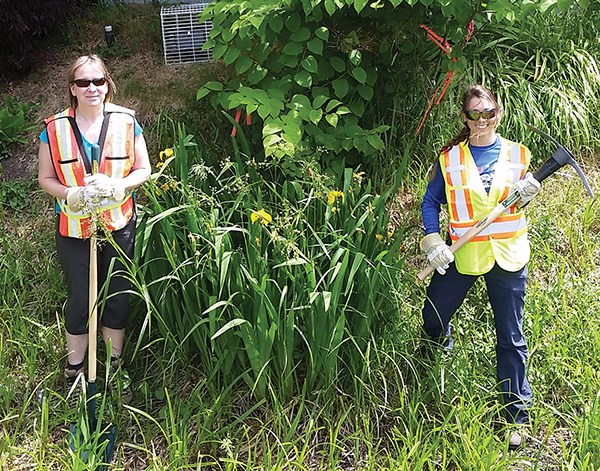Japanese knotweed and giant hogweed are not welcome in Squamish.
Knotweed, in particular, has presented a challenge in recent years as an invasive species.
“It’s pretty much number one on the priority list for the province of B.C.,” said Clare Greenberg, executive director for the Sea to Sky Invasive Species Council (SSISC). “Knotweed’s probably the biggest problem in Squamish.”
Another invasive species, giant hogweed, is not common here but can be a health hazard because of its sap, which is harmful to skin and eyes, so the SSISC will go to any site to apply treatment.
This past year, the SSISC has been busy on a number of fronts to tackle noxious intruders. The council had staff working on sites around Squamish, and one significant project has been a Japanese knotweed infestation around the former Britannia Mine site.
Greenberg assumes the knotweed has been growing there for some time, although it was unusual as it was protected under tree canopy as opposed to showing up at disturbed sites, which is more common. While they were able to treat the site this year, the plant presents a long-term battle.
“It’s such a resilient plant. One season of treatments is not enough,” she said.
Generally, a knotweed infestation requires three to four years of treatment to ensure it is gone, and even then, a new stem could take root 10 years later.
“There’s no silver bullet,” Greenberg said. “You have to come at it with an integrated approach.”
For the entire region, she estimates the SSISC treated about 300 sites chemically or mechanically, although not every location could be tackled.
“We can’t do it all. We have to prioritize what we do.”
The group has also conducted workshops for different agencies in the area. This week, SSISC conducted an invasive-free certification workshop aimed at horticulture, landscaping and earth-moving companies to educate them on what to look for in invasive species and how to prevent spread.
The program also helps the SSISC make sure places like backyards and gardens – sites that they might not get to – are being covered.
“The idea is that they’re extra pairs of eyes out there on the ground,” Greenberg said.
The SSISC is funded by the District of Squamish, the Squamish First Nation, provincial ministries and industry partners, as well as Squamish-Lillooet Regional District, which contributed funds for the first time this year.
The council has been working with the District of Squamish to train staff working along roads or park sites.



